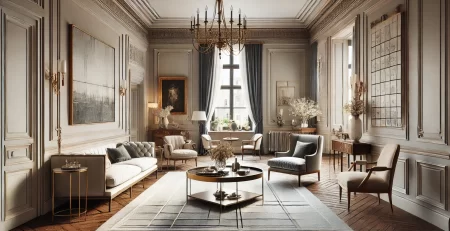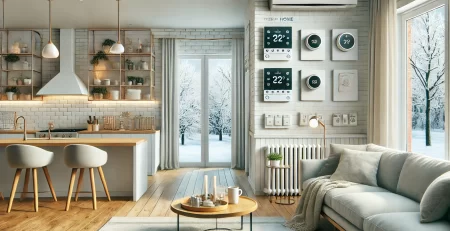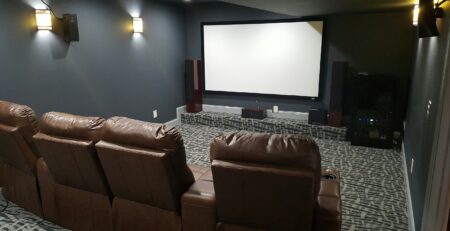Minimalist Meets Cozy: The Perfect Blend of Style in 2025 Home Design
The world of interior design is constantly evolving, and 2025 is set to redefine how we approach home aesthetics. One of the most prominent trends emerging this year is the fusion of minimalism with cozy elements. Gone are the days when minimalism meant stark, cold, and impersonal spaces. Today, homeowners are embracing a warm, inviting, yet streamlined approach to their interiors. This new wave of design strikes the perfect balance between functionality, simplicity, and comfort, creating a home that is both stylish and livable.
In this article, we explore how the minimalist-meets-cozy trend is shaping 2025 home design, covering essential elements, design inspirations, and practical tips for integrating this style into your home remodeling projects.
The Evolution of Minimalism in Home Design
Minimalism has long been associated with clean lines, neutral palettes, and a focus on functionality. However, traditional minimalism sometimes lacked warmth, making homes feel more like art galleries than comfortable living spaces. Over the years, designers and homeowners alike have sought to merge minimalism’s sleek aesthetic with elements that evoke warmth and relaxation.
The result? A harmonious blend of modern simplicity and inviting coziness. This refined approach to minimalism integrates soft textures, warm lighting, and nature-inspired materials while maintaining a clutter-free and intentional living environment.
In the past, minimalism often prioritized stark white walls, bare surfaces, and a restrained color scheme. While these principles remain, today’s minimalism embraces a more lived-in feel. Warm neutrals such as beige, taupe, and soft grays are replacing pure white to create a more inviting ambiance. Subtle pops of color, often inspired by nature, such as deep greens, earthy browns, and muted blues, add depth without overwhelming the space.
Another significant shift in minimalism is the emphasis on texture. Plush textiles, such as wool throws, linen curtains, and woven rugs, introduce comfort and warmth without compromising the minimalist aesthetic. Layering these elements provides visual interest while maintaining the simplicity that defines minimalism. Upholstered furniture with soft, rounded edges also helps create a sense of coziness while adhering to clean design principles.
Lighting plays a crucial role in blending minimalism with coziness. Instead of relying solely on bright overhead lights, homeowners are incorporating layered lighting solutions. Warm LED lights, soft-glow table lamps, and strategically placed sconces help create a relaxed and inviting atmosphere. The use of dimmers also allows for adjustable brightness, making spaces more versatile and adaptable to different moods and occasions.
Natural materials are another cornerstone of modern minimalist design. Wood, stone, and organic fabrics bring warmth and character to a space while reinforcing a connection to nature. Wooden furniture, exposed beams, and stone countertops add texture and an organic feel that complements the minimalist aesthetic. Indoor plants further enhance this connection, introducing an element of biophilic design that promotes well-being and tranquility.
Storage solutions are evolving as well. While minimalism advocates for decluttering, modern approaches focus on intelligent storage that maintains the clean look without sacrificing practicality. Built-in shelving, hidden compartments, and multifunctional furniture allow homeowners to keep essentials within reach while preserving an uncluttered appearance.
In 2025, the fusion of minimalism and coziness is shaping home remodeling trends. More homeowners are seeking balance between sleek design and a welcoming atmosphere. Whether through warm neutrals, inviting textures, or nature-inspired elements, this refined approach to minimalism ensures that homes remain both stylish and comfortable. By blending simplicity with warmth, today’s minimalist spaces achieve an aesthetic that feels as good as it looks.
Key Elements of the Minimalist-Cozy Aesthetic
1. Neutral, Warm Color Palettes
While traditional minimalism relied heavily on whites and grays, the cozy-minimalist aesthetic incorporates warmer neutrals such as taupe, beige, soft browns, and muted terracottas. These colors create an inviting atmosphere without compromising the simplicity of minimalist design.
2. Layered Textures for Warmth
To balance the sleek and simple lines of minimalism, homeowners are adding layers of texture through soft furnishings, natural fabrics, and organic materials. Wool throws, linen curtains, textured rugs, and woven baskets contribute to the feeling of warmth and comfort.
3. Functional and Elegant Furniture
Minimalist-meets-cozy design embraces furniture that is both functional and aesthetically pleasing. Multi-purpose pieces, such as modular sofas, extendable dining tables, and built-in storage solutions, help maintain a clutter-free environment while enhancing comfort and usability.
4. Soft, Ambient Lighting
Lighting plays a crucial role in setting the mood of a minimalist-cozy space. Instead of harsh overhead lights, homeowners are opting for layered lighting solutions such as floor lamps, wall sconces, pendant lights, and LED strips that create a soft, ambient glow.
5. Bringing Nature Indoors
Biophilic design elements are seamlessly integrated into the minimalist-cozy aesthetic. Houseplants, wooden furniture, stone accents, and natural fiber décor pieces help to create a serene and organic feel within the home. Large windows that maximize natural light further enhance the connection to the outdoors.
6. Decluttering with Purpose
Minimalism’s core philosophy of “less is more” remains intact, but with a more personalized approach. Instead of empty spaces, homes are curated with carefully selected pieces that reflect the owner’s personality and bring joy without overwhelming the space.
How to Incorporate Minimalist-Cozy Design into Your Home Remodeling Project
1. Start with a Clean Slate
When embarking on a home remodeling project, begin by decluttering and assessing what truly adds value to your space. Keep only items that serve a purpose or bring warmth and joy.
2. Choose a Cohesive Color Scheme
Opt for soft, earthy tones that complement natural materials and fabrics. This will create a seamless and inviting aesthetic throughout your home.
3. Invest in Quality Over Quantity
Minimalist-cozy design prioritizes thoughtful purchases over excessive décor. Choose high-quality furniture and decor that will stand the test of time, rather than filling your space with trendy, short-lived items.
4. Enhance Comfort with Textiles
Incorporate plush area rugs, knitted throws, and upholstered furniture to add softness to minimalist spaces. These elements contribute to a cozier atmosphere without compromising the clean, structured feel of minimalism.
5. Incorporate Smart Storage Solutions
One of the biggest challenges of minimalism is maintaining an uncluttered environment. Built-in shelves, concealed storage, and multi-functional furniture help keep your home organized without sacrificing style.
6. Prioritize Natural Light and Soft Lighting
Maximize the use of natural light by choosing sheer curtains or leaving windows uncovered. Complement this with strategically placed lighting to create a warm and inviting glow during the evening.
7. Bring in Organic Elements
Wood, stone, and other natural materials add warmth and depth to minimalist spaces. Whether it’s a reclaimed wood coffee table, a stone backsplash, or bamboo flooring, these elements help soften the sleekness of minimalism.
Why the Minimalist-Cozy Aesthetic is Perfect for 2025 Homes
The blend of minimalism and coziness is more than just a passing trend—it reflects a shift in how people want to experience their living spaces. As more people spend time at home, whether for work or leisure, the demand for spaces that promote tranquility, functionality, and warmth continues to rise.
This design approach aligns with the growing interest in mindful living, sustainability, and home remodeling strategies that prioritize longevity and adaptability. By striking a balance between style and comfort, minimalist-cozy homes provide a serene sanctuary in today’s fast-paced world.
Conclusion
The minimalist-meets-cozy trend is redefining home design in 2025, offering homeowners a perfect blend of simplicity and warmth. By incorporating neutral palettes, layered textures, smart storage solutions, and natural elements, this aesthetic creates a balanced and inviting environment. Whether you’re embarking on a home remodeling project or simply refreshing your space, embracing this trend ensures your home remains stylish, functional, and incredibly comfortable for years to come.












Leave a Reply